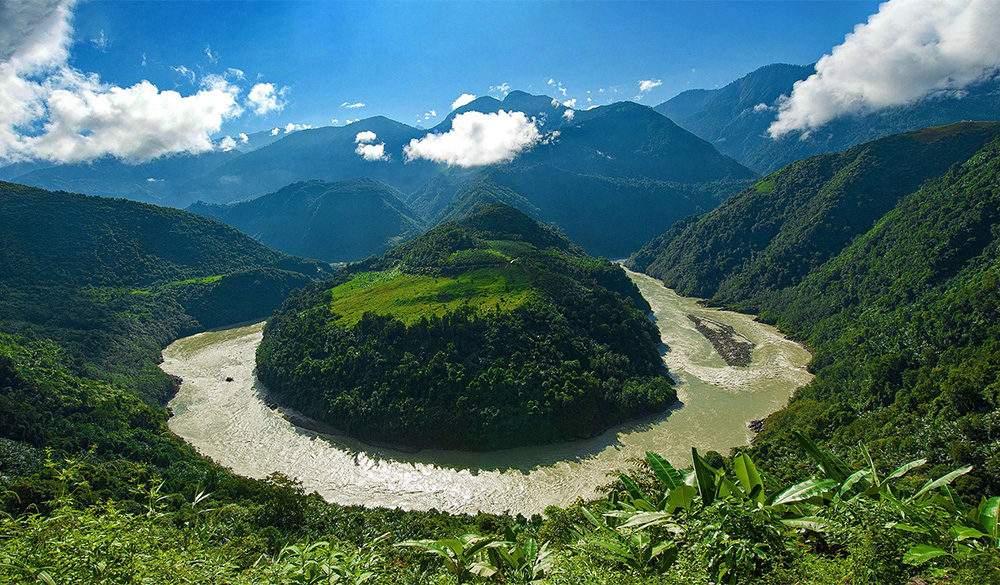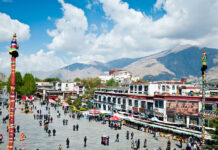(TibetanReview.net, Nov30’20) – Despite concerns voiced by lower riparian countries India and Bangladesh, China has decided to go ahead with its plan to build a major dam on the Yarlung Tsangpo river in occupied Tibet, citing among other reasons both domestic and national security. Construction could begin next year. One of the major river systems of Asia, the Yarlung Tsangpo traverses much of the breadth of Tibet before entering India where it is called the Brahmaputra.
Speculations about China planning to build a “super hydropower station” in Medog County, where the Yarlung Zangbo Grand Canyon is located, have circulated for years, noted China’s official globaltimes.cn Nov 29. There were suggestions in the past that the project could involve civilian use of nuclear explosion.
China will “implement hydropower exploitation in the downstream of the Yarlung Zangbo River,” and this was clearly put forward in the proposals for formulating the country’s 14th Five-Year Plan (2021-25) and its long-term goals through 2035 made by the Central Committee of the Communist Party of China, the globaltimes.cn report cited Yan Zhiyong, chairman of the Power Construction Corp of China, or POWERCHINA, as saying at a conference on Nov 26.
Indicating the enormity of the project – about which not much is known yet – Yan has said at a conference to celebrate the 40th anniversary of the founding of the China Society for Hydropower Engineering, “There is no parallel in history… it will be a historic opportunity for the Chinese hydropower industry.”
Referring to the river’s enormous potential, the report said the mainstream of the Yarlung Zangbo River had the richest water resources in Tibet Autonomous Region (TAR) at about 80 million kilowatt hours (kWh), while the 50-kilometer section of the Yarlung Zangbo Grand Canyon had 70 million kWh that could be developed with a 2,000-meter drop, which equals more than three Three Gorges power stations.
This appears to suggest that the dam will power the world’s largest hydropower project.
The report said the TAR had about 200 million kWh of water resources, accounting for 30 percent of the total in the People’s Republic of China (PRC).
“It is a project for national security, including water resources and domestic security,” Yan was quoted as saying, noting that the project will also smooth cooperation with South Asia.
The Three Gorges Hydropower Station project eventually in China relocated 1.4 million people, the report said. And in Sichuan and Yunnan provinces, a total of 89,021 people will be resettled to build the Baihetan Hydropower Station, it added.
Medog, which adjoins India’s Arunachal Pradesh state, has a population of just about 14,000 and was the last county in the PRC to be connected to the outside world with a highway.







